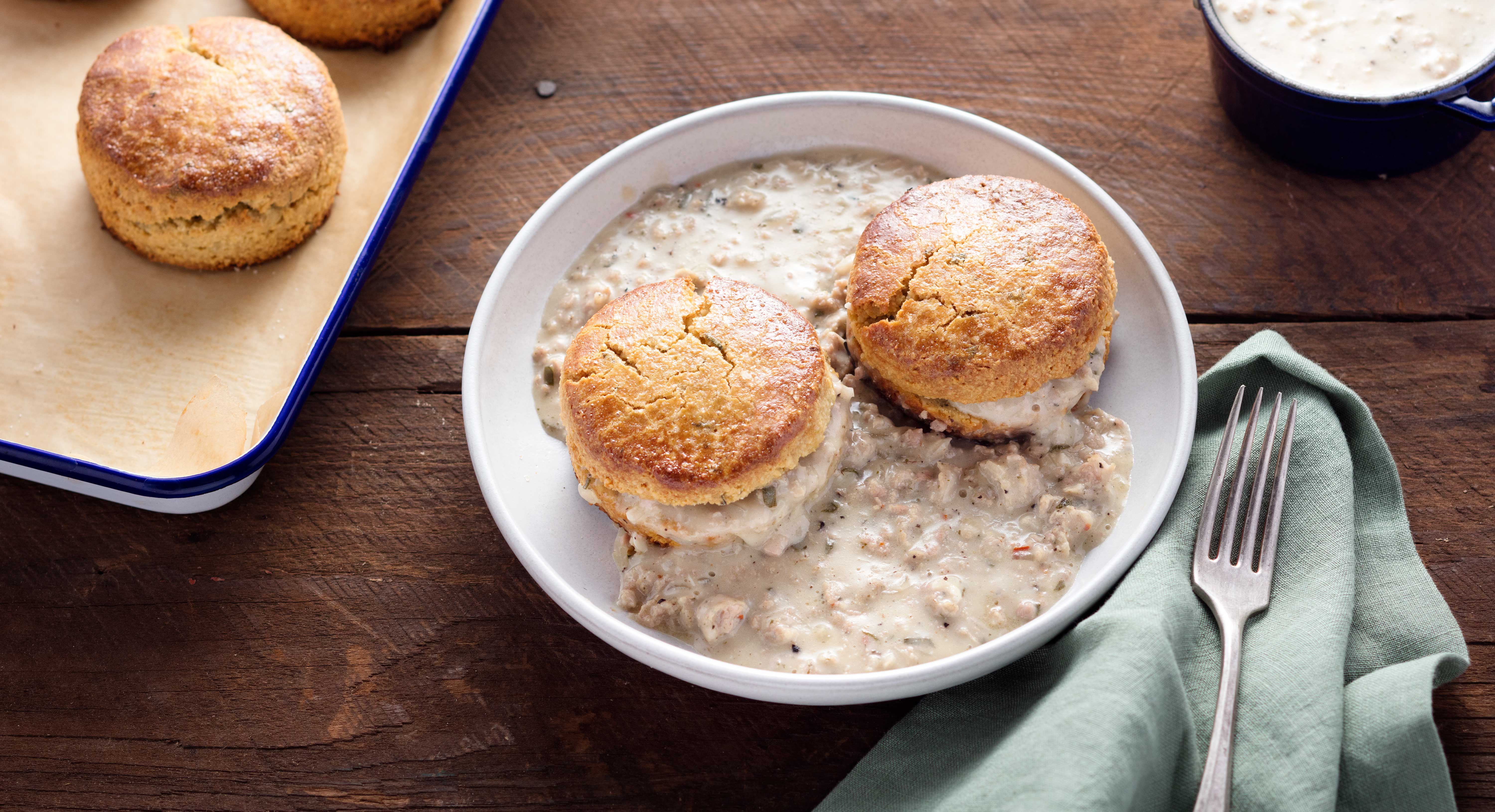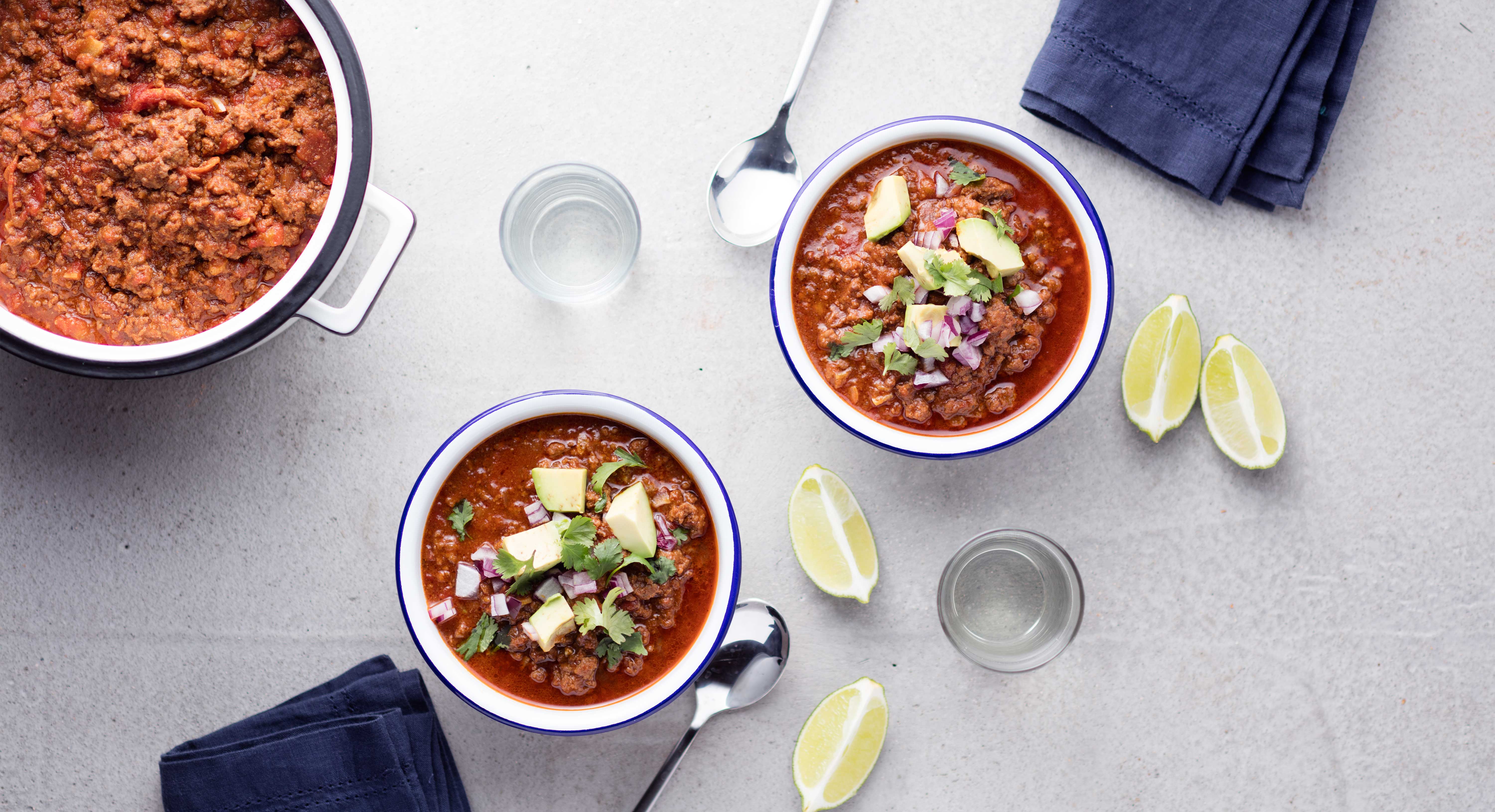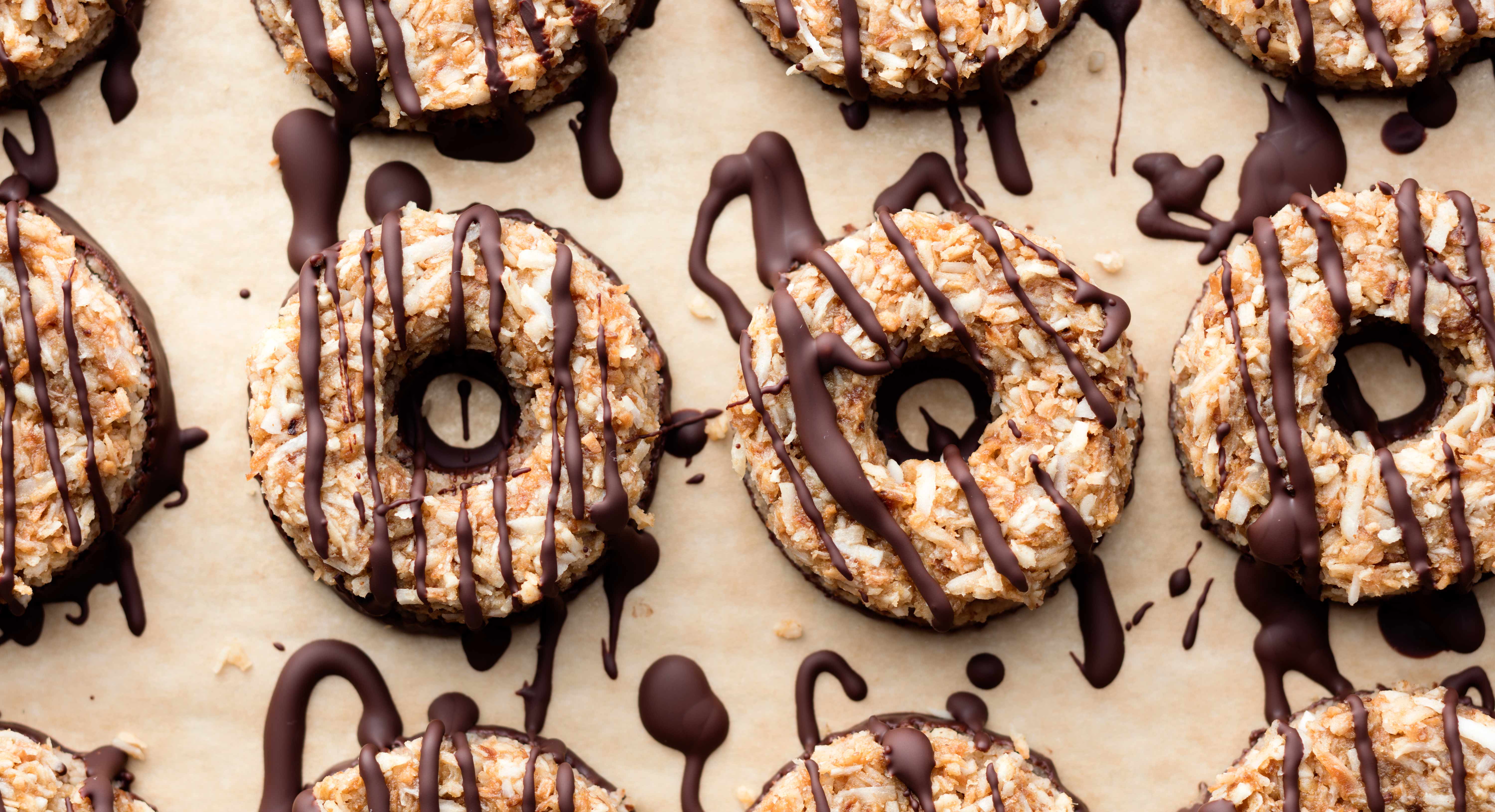The Paleo diet is the world’s oldest way of eating, encouraging foods that were available to the earliest humans during the Paleolithic era (such as fruits and vegetables, and plenty of meats and good fats).
Many proponents of this lifestyle have theorized that our bodies haven’t evolved to handle the more processed foods that have become a large part of the standard American diet, and have called for a resurgence of the caveman way.
While planning a Paleo diet can seem like a large undertaking (after all, you are eliminating sugar, grains, and dairy), luckily there are tons of books and online resources available that can help guide you in starting and maintaining this way of eating—and discuss why it’s good for you. Some of the benefits can include weight loss and lower blood pressure and cholesterol.
Here’s some general info you need to know, as well as ideas for what to eat for breakfast, lunch, and dinner.
Paleo diet basics
Though it’s an ancient way of eating, the Paleo diet is becoming increasingly popular in modern times. Supporters believe that contemporary eating habits are largely responsible for all types of rampant health problems, including but not limited to heart disease, cancer, obesity, diabetes, infertility, depression, Alzheimer’s disease, and Parkinson’s disease.
The belief is that current ways of eating often revolve around too much sugar, trans fats, and refined foods that the human body has a difficult time breaking down. Paleo, on the other hand, sources natural food products that many believe can prevent illness and provide more energy.
The main components of every Paleo meal are vegetables, fruits, lean proteins, and healthy fats.
Vegetables and fruits are packed with phytonutrients, minerals, antioxidants, and vitamins that are known to make people less susceptible to various degenerative illnesses, such as diabetes and cancer. These important compounds can also protect against the risk for neurological issues.
Protein is also essential; without it, humans would cease to exist since it makes up major parts of the body, including skin, hair, nails, muscle, and tissue. Protein is needed for cellular health, but is also a smart dietary choice because it’s very filling. Choosing more protein can help you stop snacking between meals.
Healthy fats are needed for optimal heart health and overall body function. They are derived from sources including grass-fed meat, fish oils, and some nuts and seeds.
Paleo’s biggest benefits
While the Paleo diet may seem restrictive, there are still tons of delicious things that you can eat—and the biggest gain will be the health benefits that come along with changing your eating habits and lifestyle. Here are just some of the positive effects you might notice:
You probably won’t be hungry. The Paleo diet champions the idea of eating when you are hungry, and relies less on calorie counting and monitoring every last drop you intake. This also makes it less stressful than having to carry around a food diary at all times. As long as you eat approved food choices, you can snack at will (though with all the protein and fiber you’ll be getting, it’s likely you won’t feel the need to).
You’ll have more energy. The heavy amounts of protein and healthy fats that are consumed in a Paleo diet are easily converted by the body into usable energy. Plus, eating better (with less stimulants like sugar) can also lead to more uninterrupted sleep every night.
Your stomach will feel better. The Paleo diet avoids processed foods in all forms. Processed and sugary foods have been proven to wreak havoc on a healthy digestive system, leading to inflammation and other chronic diseases over time. Eating more natural foods will cause less bloating, indigestion, and heartburn.
You’re less likely to suffer from food allergies. Because many Paleo foods come from all natural sources (and are without additives and chemicals), it helps to keep allergens at bay. Plus, nixing all dairy and grains is helpful for those with lactose or gluten issues. Overall, this cuts down on systemic inflammation and the risk of developing autoimmune disorders.
Your skin will look amazing. Thanks to all the vitamins and minerals in plant sources, your skin will be a huge benefactor of eating Paleo. Many have experienced cleared up acne and relief from dermatitis and psoriasis, both of which can also be caused by extra inflammation.
You could lose weight. Most of the foods on the Paleo diet are naturally low-calorie and high in fiber and protein, all of which can help keep you satiated for longer and reduce the need for snacking between meals. The extra energy you’ll from these good food sources will also increase athletic performance, meaning those gym workouts will be even more amplified.
Paleo “yes” foods
Paleo diets are comprised of very nutrient-rich food, and, in keeping with the prehistoric ethos, that means only foods that can be hunted or gathered. A good Paleo diet should consist of a balance of proteins, healthy fats, and plant sources with vitamins, minerals, and micronutrients.
Here are just some examples:
- Meats like steak, bison, and bacon
- Lean meats like chicken, turkey, fish, and shellfish
- Eggs
- Non-starchy produce (go for broccoli and berries but stay away from potatoes)
- Herbal tea
- Coconut water
Paleo “no” foods
Following this diet also means abstaining from processed and pre-packaged foods, as well as sugar, grains, and dairy products. Some other items that aren’t allowed, mainly because they are considered to be allergen triggers, are:
- Corn and corn syrup
- Soy
- Gluten
- Legumes
- Rice
- Coffee
- Alcohol
Beginning to eat Paleo
While it may not seem like a very extensive list you have to work with, there’s actually a ton of options and there are many things you can do with the foods that are allowed. Meal planning is very important because it gives you more manageability and ensures you’re incorporating a number of different foods as well as getting all of the nutrients that your body requires. Here’s some ideas for planning Paleo meals for breakfast, lunch, and dinner (and even some desserts too).
Paleo breakfast
Breakfast is the most important meal of the day, and a great way to incorporate plenty of the protein, veggies, and oils that are called for in the Paleo diet. For an easy go-to, gather up some free range eggs to scramble or make an omelet with peppers, onions, broccoli, and mushrooms, and add a side of bacon. Or, here some more creative ideas:
Paleo Pancakes
Just because you’re following a Paleo lifestyle doesn’t mean you have to give up on classic breakfast dishes. Paleo pancakes are made with ingredients like coconut flour, coconut oil, raw honey, and almond milk; they are completely organic and natural, so you won’t have to feel guilty for eating them.
Paleo Breakfast Sausage
Pair your eggs and pancakes with a side of hearty sausage. The spices in this recipe (including fennel seed, cayenne pepper, and paprika) can be adjusted until the flavor is to your liking. Use coconut oil for frying to give these links even more healthy fats.
Paleo Biscuits and Gravy
Even this Southern staple can be modified to be Paleo by using almond flour and olive oil for the bread and ghee and almond milk for the gravy. Add some of the Paleo breakfast sausage for some protein, too.
Paleo lunch
Salads are a great option for a Paleo lunch. Grab a bunch of dark, leafy greens like spinach and kale and then stack on all the meats and veggies that your heart desires. Vary up the options every day so you get more varied nutrients (and don’t get bored). Try tuna, shrimp, chicken, salmon, and bacon for meats and add in produce featuring all colors of the rainbow. Then, make a dressing out of healthy ingredients like olive oil with a dash of apple cider vinegar and add some approved seeds like pumpkin seeds for some extra texture and crunch. You can also make a quick sandwich using Paleo wraps—just fill with meats, veggies, and a little avocado oil mayo. Here are other ideas you can add to your plate for a well-rounded meal:
Curried Chicken Salad
This is not your mom’s chicken salad recipe. Created by Paleo pioneer Mark Sisson, this one has a ton more zing with curry powder, apples, walnuts, celery, and a couple tablespoons of avocado oil mayo. It’s great on its own or rolled into a lettuce wrap.
Tuna Temaki (Tuna Hand Rolls)
Craving sushi for lunch? Try this recipe that skips the rice and instead wraps a fresh tuna salad in nori sheets with matchstick-sized cucumbers.
Paleo Chicken Nuggets
Great for kids and adults, these bite-sized nuggets are breaded using only coconut flour, ground flaxseed, eggs, onion powder, and ghee or olive oil for frying.
Paleo dinner
Most well-rounded dinners include good portions of meat, chicken, or fish as well as veggies, which means you’re already on the way to eating Paleo for the final meal of the day. Though pasta, rice, and other grains are out, you can get creative by subbing in spaghetti squash, zucchini noodles, or cauliflower rice. Here, too, you can nosh on salad or steam some veggies, which will help them retain more of the inherent nutrients. For a wholesome meal, you can also try these options and find 60 more ideas here.
Paleo Chili
If you’re not a fan of kidney beans in your chili anyway, then try the Paleo-friendly Texas con carne variety, which focuses more on tons of meat, spices, and beef bone broth.
Kelp Noodle Jap Chae
This traditional Korean stir-fry normally has rice noodles, but subbing in kelp noodles makes this dish Paleo-friendly and super nutritious, too.
Cauliflower Mac and Cheese
You can still have all your favorite comfort foods, with some creative modifications. In this recipe, bite-sized cauliflower florets act as the noodles while cashews and nutritional yeast give the familiar cheesy flavor.
Paleo desserts
Just because sugar is out of the question, dessert is not! While you could munch on some fruit, there are some more flavorful options, too.
Coconut Creme Brulee
The French staple gets a Paleo makeover using coconut cream in place of heavy cream, as well as coconut sugar, vanilla bean, and eggs.
Raw Paleo Samoas
Girl Scout cookie season is every season with this recipe that uses a variety of nutritious sugar substitutes including Medjool dates, raw honey, and maple syrup.
And, if you need some Paleo snack ideas, try these 64 ideas, including bison bacon bites, seaweed snacks, and homemade trail mix to help you feeling food and full all day long.





